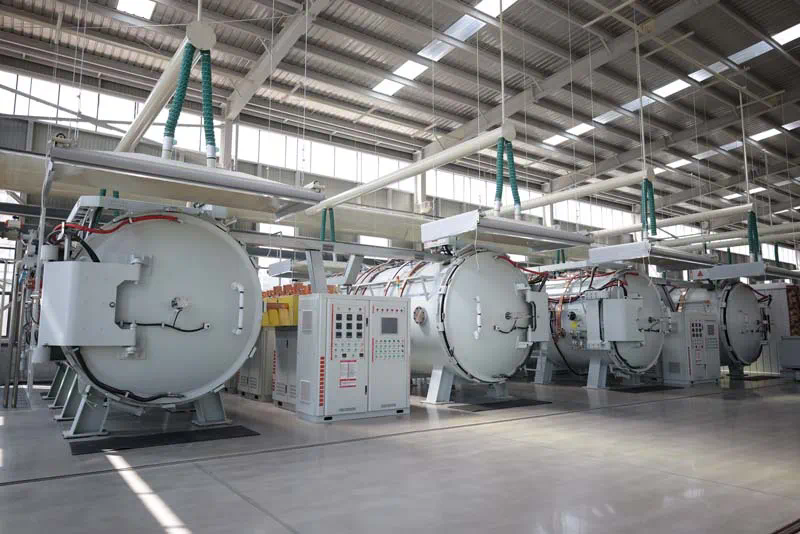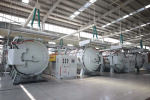Silicon Carbide (SiC) has emerged as a crucial material in the realm of high voltage power supplies, revolutionizing various industries with its unique properties and advantages. This article explores the extensive applications and benefits of Silicon Carbide, highlighting its role in enhancing efficiency, reliability, and performance across different sectors.
Introduction to Silicon Carbide
Silicon Carbide, a compound of silicon and carbon, is renowned for its exceptional properties that make it highly suitable for high voltage applications. It exhibits a combination of characteristics that surpass those of traditional silicon-based materials, particularly in terms of power handling capabilities, temperature resistance, and switching performance.
Chemical and Physical Properties
SiC features a wide bandgap of approximately 3.0 eV to 3.3 eV, significantly higher than that of silicon (1.1 eV), which enables it to operate at higher temperatures and voltages without breakdown. This property is crucial for applications demanding robustness and reliability under extreme conditions.
Applications of Silicon Carbide in High Voltage Power Supplies
Power Electronics
In the realm of power electronics, Silicon Carbide has revolutionized the design and efficiency of high voltage power supplies. Its superior thermal conductivity and ability to withstand high temperatures make it ideal for use in devices such as:
– Power Converters: SiC-based devices like MOSFETs (Metal-Oxide-Semiconductor Field-Effect Transistors) and Schottky diodes are increasingly used in power converters for their lower conduction losses and higher switching frequencies.
– Inverters: SiC-based inverters find applications in renewable energy systems, electric vehicles (EVs), and industrial motor drives due to their capability to handle higher voltages and frequencies with reduced size and weight.
Automotive Industry
The automotive sector has embraced Silicon Carbide for its potential to improve the performance and efficiency of electric vehicles. Key applications include:
– On-board Chargers: SiC-based chargers enable faster charging times and higher power density, contributing to extended driving ranges and improved overall efficiency.
– Powertrain Systems: SiC devices enhance the efficiency of motor drives and power inverters in electric and hybrid vehicles, reducing energy losses and enhancing performance.
Renewable Energy
In renewable energy systems such as solar and wind power generation, Silicon Carbide plays a pivotal role in enhancing energy conversion efficiency and reliability:
– Photovoltaic (PV) Inverters: SiC-based inverters offer higher efficiency and reliability in converting DC power from solar panels into AC power for grid integration.
– Wind Power Converters: SiC devices improve the efficiency and performance of power converters used in wind turbines, ensuring optimal energy harvesting under varying environmental conditions.
Advantages of Silicon Carbide in High Voltage Power Supplies
Efficiency and Energy Savings
One of the primary advantages of SiC is its significantly lower conduction and switching losses compared to traditional silicon-based devices. This characteristic results in higher system efficiency and reduced energy consumption, making it an attractive option for applications requiring high power densities and improved thermal management.
Temperature Performance
SiC’s high thermal conductivity and superior temperature resilience enable operation at elevated temperatures without compromising device performance. This capability extends the lifespan of components and reduces the need for complex cooling systems, thereby enhancing overall system reliability and reducing maintenance costs.
Size and Weight Reduction
The ability of SiC devices to operate at higher frequencies allows for the design of more compact and lightweight power supplies and converters. This is particularly beneficial in applications where space is limited or weight reduction is critical, such as aerospace and portable electronics.
Challenges and Future Outlook
While Silicon Carbide offers compelling advantages, its widespread adoption faces challenges such as higher manufacturing costs and the need for optimized driver and control circuits. Ongoing research and development efforts focus on addressing these challenges to further enhance the performance and cost-effectiveness of SiC-based solutions.
Conclusion

In conclusion, Silicon Carbide stands at the forefront of innovation in high voltage power supplies, driving advancements across various silicon carbide blast media industries with its unique combination of properties. From power electronics and automotive applications to renewable energy systems, SiC continues to redefine standards for efficiency, reliability, and performance. As research and technological advancements continue, the role of Silicon Carbide in shaping the future of high voltage power supplies is poised to expand, offering silicon carbide conductivity new possibilities for sustainable energy solutions and enhanced industrial capabilities.
https://ortumeta.com/
